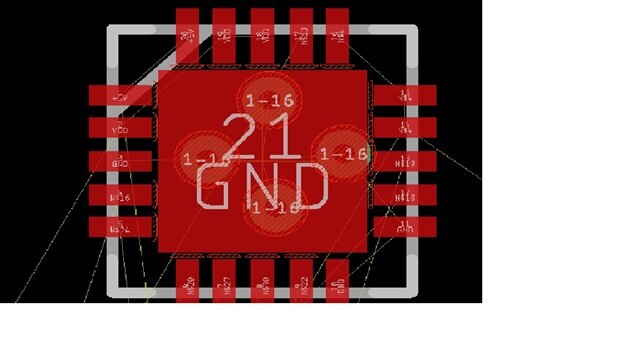I am using a library for MCP73871 battery controller. I tried two different librarys but I get the same clearance error as shown in the picture. This is qfn package where the centre is the exposed pad and is grounded.
Changing DRC clearance does not get rid of the error. Is it a faulty library or am i doing something wrong ... MANY THANKS
